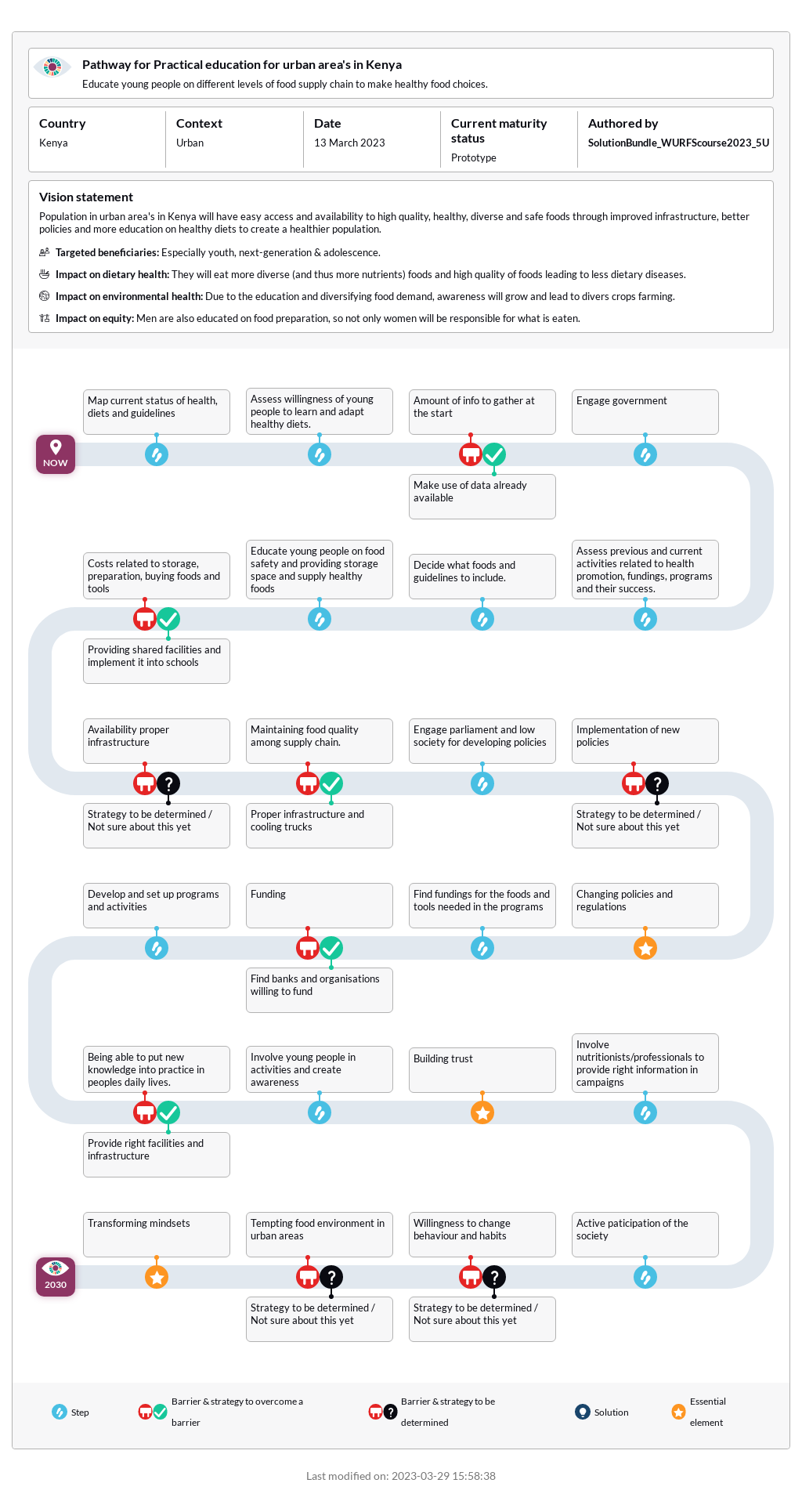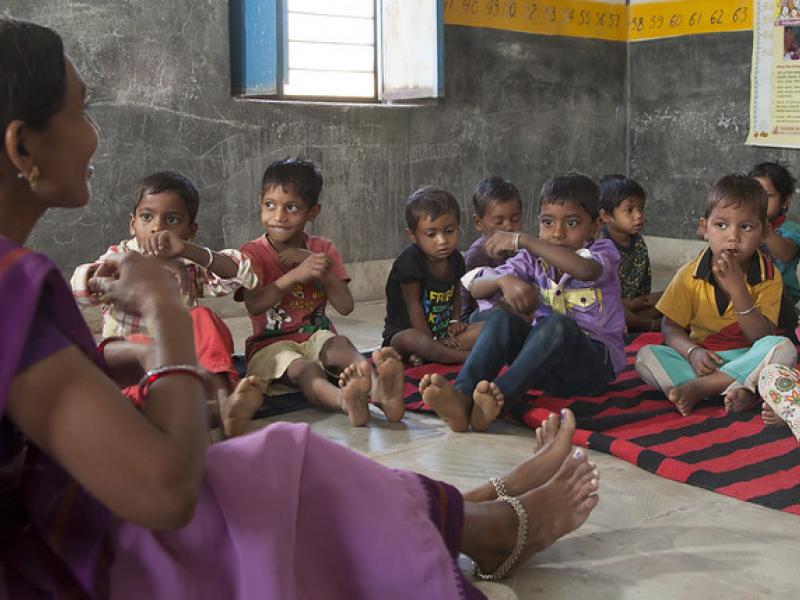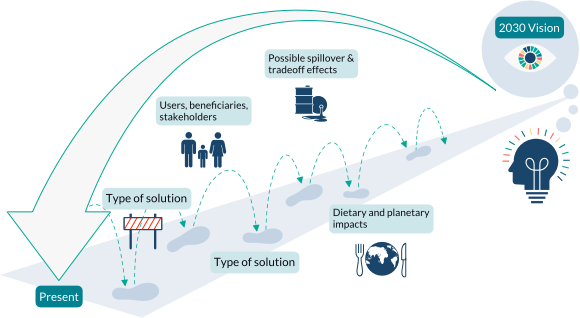
Educate young people on different levels of food supply chain to make healthy food choices.
Population in urban area's in Kenya will have easy access and availability to high quality, healthy, diverse and safe foods through improved infrastructure, better policies and more education on healthy diets to create a healthier population.


